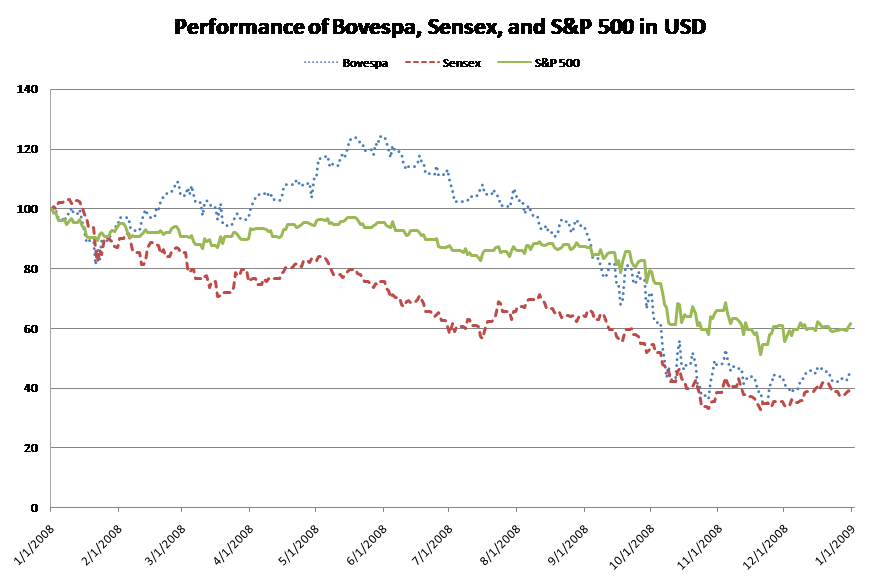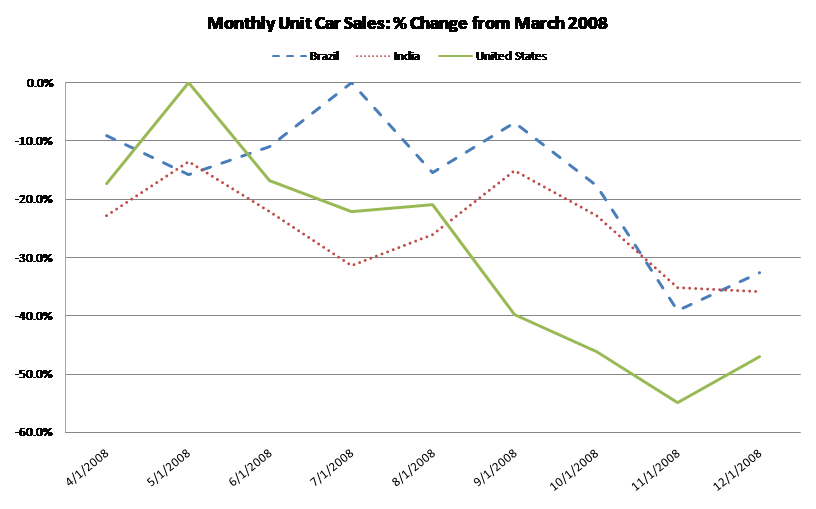Equinox Partners, L.P. - Q1 2009 Letter
Dear Partners and Friends,
PERFORMANCE & PORTFOLIO
Equinox Partners appreciated 5.9% in the first quarter. Subsequent to the first quarter’s end, our fund has risen substantially as stocks around the world have rallied sharply. As of June 1st, our fund was up 68% for the year-to-date.
Decoupling
Given our outright pessimism about America and Europe’s economic prospects, our decision last fall to cover almost all of our shorts and increase our long exposure to 120% of partner’s capital left many of our investors confused. Why would we want to be fully invested, the most fully invested that we’ve been in the fund’s fourteen year history, if we think that America and Europe, which together account for over half the world’s GDP, are in for an extended financial deleveraging?
Our answer is threefold: 1) with a handful of exceptions, we are invested in companies whose principal business is neither in the US nor Europe; 2) as of late last year, these companies were trading at fire sale prices; 3) the developing world, unlike the developed world, is not laboring under a massive debt burden. While the structural problems in US and Europe will likely make the road back to intrinsic value for our companies a bumpy one, we are confident that in the long-run our companies and the economies in which they operate will grow nicely whether or not America and Europe regain their economic footing. Put differently, we believe the developing world will decouple from the developed world in the years ahead.
Decoupling, a formerly derided theory thought now to be thoroughly debunked, holds that emerging markets can continue on their growth path even as the developed world falters. Given the severity with which emerging markets traded off last fall in response to the developed world’s financial crisis, there aren’t many defenders of this theory left. In fact, last fall, not only did the world’s economies not decouple, correlations increased dramatically, with emerging market stocks actually declining more than their developed market peers.
Even looking beyond these stock market correlations, we found a sharply increased correlation in global economic fundamentals. Take monthly car sales for instance. Last fall, this data series in India, Brazil and America moved in almost perfect sync.
While disconcerting, these short-term economic data points can be very misleading. With the world’s financial system in a panic, every economy in the world went into a steep decline. Some economies hit a sizable air pocket while others experienced engine failure. In the first few moments, when the plane plunges, both phenomena look similar. Only in the coming months and years will we see the underlying difference play out, a difference still not apparent in the short-term data, but clearly visible under the lens of fundamental analysis.
Episodes like last fall, in which emotion overwhelms analysis and financial assets trade together despite varied underlying fundamentals, create a spectacular opportunity for long-term investors like us. We had no informational advantage over our peers. Were our stocks bottoming? Were car sales going to bounce back? We had no idea. We weren’t even asking ourselves these questions. We were, instead, focused on the long-term prospects of the companies and countries in which we are invested, questions which were knowable in a way that the next moves up or down in a business cycle were not.
The benefits of working with a distant time horizon cannot be overemphasized, and while a simple concept, it merits an example to drive home the point. Last fall we invested in a job placement company. Job placements at the time were falling fast, and so was the stock in question, down more than 80% off its recent peak. While the short-term volatility of the stock and the business was noteworthy, it just wasn’t that important in our decision making process, other than that it gave us an attractive entry price. Whereas others saw nothing more than a geared play on an economic recovery, we saw a superior franchise with decades of highly profitable growth potential. We saw a company with a dominant brand and superior business model offering real value to its customers and cutting costs dramatically. Instead of trying to figure out how low the new low on the job index would be, we were busily trying to figure out what the company would look like in five or ten years.
Personnel
In April, we initiated a hiring process to replace a departing analyst, Steve Rahl. Over the ensuing month and a half, we interviewed more than thirty candidates. We are pleased to report that this process resulted in our hiring two top-flight analysts, Andrew and Yev. We also decided to implement an employee retention program, Equinox Principals, LLC. This vehicle will allow us to share part of the General Partner’s incentive allocation with our key employees, an invaluable structure to have as our staff matures.
Sincerely,
Sean Fieler
William W. Strong











